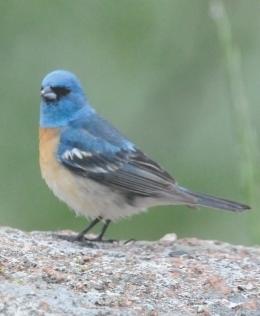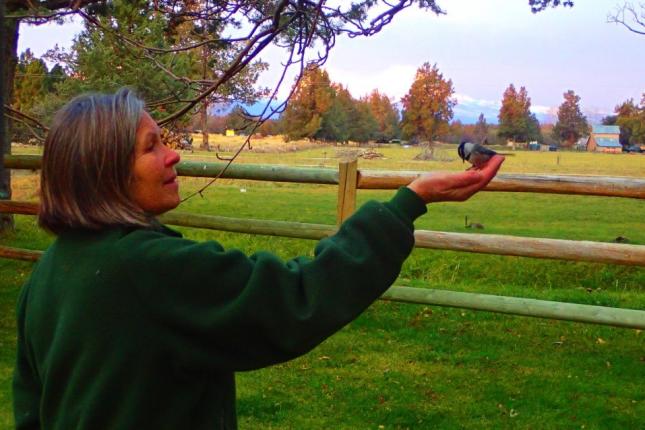 Spring Surprise at the Feeder
Spring Surprise at the Feeder
Ever get frustrated? Me too. This week I spent countless hours trying to figure out my irrigation system—and failed. The whole episode nearly sent me over the edge of this seven acre wonderland. I was so over it I even put an offer on another house. Honestly. Then a life bird visited my feeder. That little feathered friend inspired me to hang in there and fight on. The next day, I rescinded my offer. Who was this spirit-lifting bird that changed my perspective, you ask? A Lazuli Bunting! - (click and learn more...)
Named for the sought after stone Lapis Lazuli—I, too, sought after this celestial, blue bird. Its scientific name Passerina amoena means beautiful sparrow. And he’s beautiful indeed. In 1902, William Rogers Lord in Birds of Oregon and Washington wrote of the Lazuli Bunting, “If it is a question of beauty and coloring no other bird may hope to surpass to human eyes this little bit of heaven’s blue…” I concur.
But in addition to his striking coloration is the story of his song. Young males show up on the breeding ground alone and without a song. The Lazuli Bunting is a composer of sorts. After listening to songs of older males, this songbird splices together snippets of tunes he’s heard, rearranges the rhythm and beat, alters the pitch and note—and creates his own sound. The result is a wonderful choral symphony of blended—but unique tunes of male Lazuli Buntings in the same neighborhood. These birds are less aggressive to their fellow kind. Sort of a brotherhood of buntings.
It’s a wild and wonderful world out there. So let’s remind each other to expect the unexpected—if not in life at least at our feeders. Spring birding can bring unusual birds to our backyard. That’s exciting!
Now, if you’ll excuse me, I must tend to my irrigation. But I’ll keep an eye out for birds…
Have a Bluebird Day!
Carol


